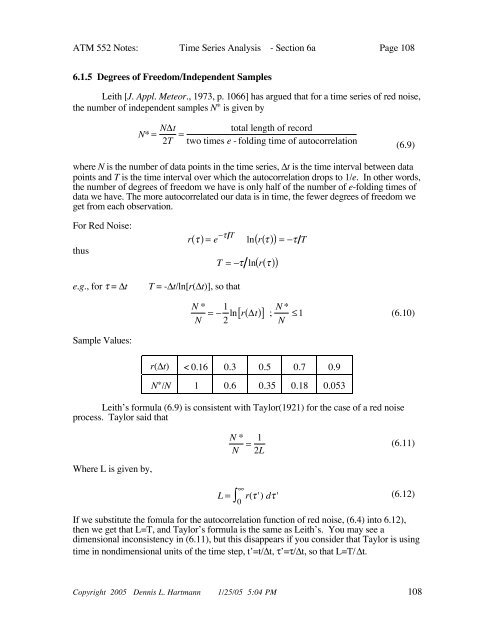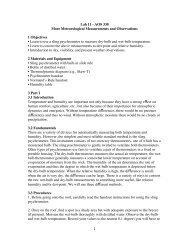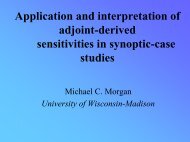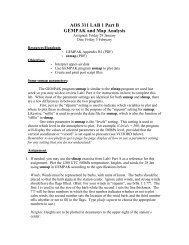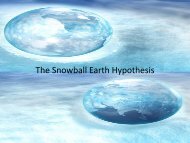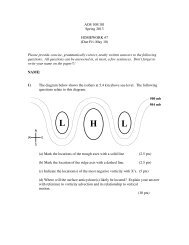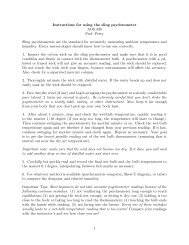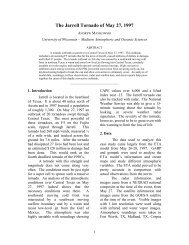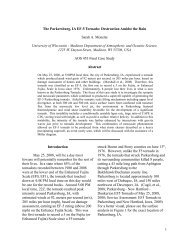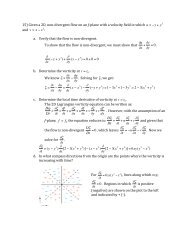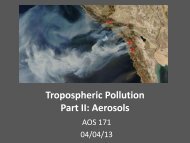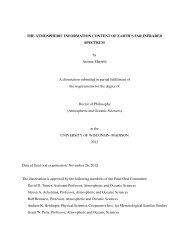Chapter 6: Time Series Analysis
Chapter 6: Time Series Analysis
Chapter 6: Time Series Analysis
You also want an ePaper? Increase the reach of your titles
YUMPU automatically turns print PDFs into web optimized ePapers that Google loves.
ATM 552 Notes: <strong>Time</strong> <strong>Series</strong> <strong>Analysis</strong> - Section 6a Page 1086.1.5 Degrees of Freedom/Independent SamplesLeith [J. Appl. Meteor., 1973, p. 1066] has argued that for a time series of red noise,the number of independent samples N* is given byN* = Nt2T = total length of recordtwo times e - folding time of autocorrelation(6.9)where N is the number of data points in the time series, t is the time interval between datapoints and T is the time interval over which the autocorrelation drops to 1/e. In other words,the number of degrees of freedom we have is only half of the number of e-folding times ofdata we have. The more autocorrelated our data is in time, the fewer degrees of freedom weget from each observation.For Red Noise:thuse.g., for = tr( )= e T ln r( )T = -t/ln[r(t)], so thatT = ln( r( ))( ) = TN *N = 1 2ln[ r ( t ) ] ; N * 1 (6.10)NSample Values:r(t) < 0.16 0.3 0.5 0.7 0.9N*/N 1 0.6 0.35 0.18 0.053Leith’s formula (6.9) is consistent with Taylor(1921) for the case of a red noiseprocess. Taylor said thatN *N = 12L(6.11)Where L is given by,L = r( ') d '(6.12)0If we substitute the fomula for the autocorrelation function of red noise, (6.4) into 6.12),then we get that L=T, and Taylor’s formula is the same as Leith’s. You may see adimensional inconsistency in (6.11), but this disappears if you consider that Taylor is usingtime in nondimensional units of the time step, t’=t/t, ’=/t, so that L=T/ t.Copyright 2005 Dennis L. Hartmann 1/25/05 5:04 PM 108


